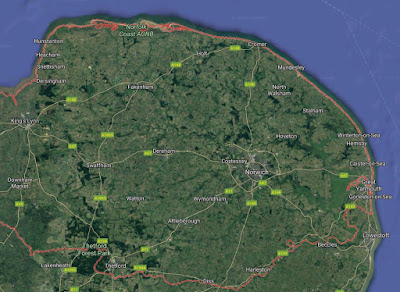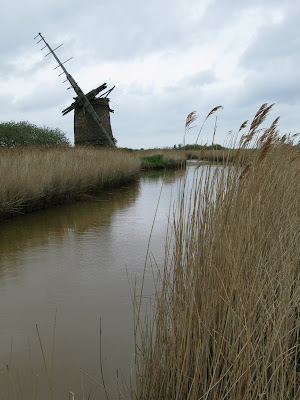We stayed in Steve's fantastic family holiday hut, tucked under the sand dunes along a beach.
The British have a long tradition of protecting birds. The Royal Society for Protection of Birds (RSPB) was founded as a women's group in 1891, and received its royal charter in 1904. Its original aim was to protect birds from wanton destruction, primarily by refraining from wearing feathers of any wild birds not killed for food. I'm glad to report that the current President and CEO are both women. The RSPB now has over 1 million members (of both sexes), and over 200 reserves, making it the largest wildlife conservation charity in Europe.
Resting on islands in the marshes were Avocets (Recurvirostra avosetta). The Avocet has been the logo of the RSPB since 1970 - designed by Cley artist Robert Gillmor.
The Norfolk Broads are a wetland of flooded rivers and lakes to the north-west of Norwich, where windmills once tried to drain them. In 1979 four Common Cranes arrived at Hickling Broad, and in 1982 a chick hatched there - the first to do so in Britain for over 400 years. There are now 64 pairs in Britain, and we were lucky enough to see one of these at Hickling.
We visited Buxton Heath, to the north-west of Norwich - full of acid-loving heather and gorse.
Here we saw the aptly named Small Heath butterfly (Coenonympha pamphilus) resting on last year's foliage. Its larvae will feed on grasses.We saw over 100 species of birds in just a few days - more than we saw in Morroco. Of particular interest were not just the distant northern water birds, but the more common European birds which can be found in gardens - many of those found in Britain are classed as distinct sub-species, being relatively sedentary populations that have evolved independently in island isolation (such as the Great Tit, Greenfinch and Dunnock).










No comments:
Post a Comment